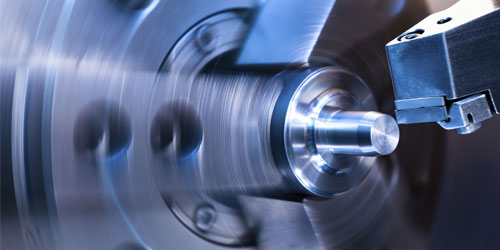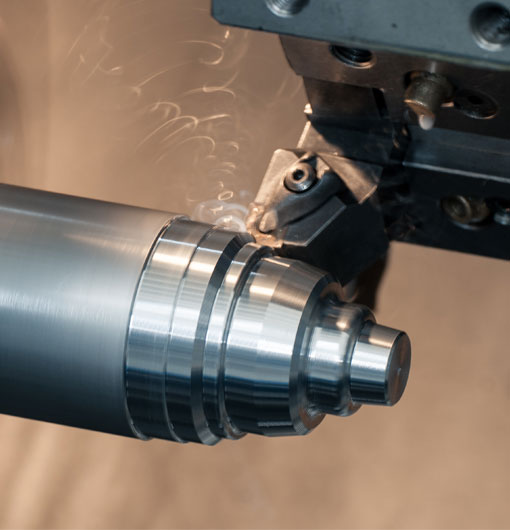In the world of computer numerical control (CNC) machining, radius turning is a crucial skill to master. In this informative guide, we will cover essential tips, techniques, and best practices to help you achieve precise results when executing a CNC radius turn. With a better understanding of this process, you'll be well on your way to reducing errors and producing top-quality machining work.
Introduction to CNC Radius Turning
CNC radius turning involves the use of a CNC lathe or mill to create curved or rounded edges on a workpiece accurately. This process can be used to create various shapes and profiles for different applications, such as automotive parts, aerospace components, and mechanical assemblies.
Executing a precise radius turn is essential in every aspect of the machining process, from programming and tool selection to workpiece setup and execution. The following sections will outline essential tips and practices to help you master CNC radius turning.
Proper G-Code Programming for Radius Turning
For accurate CNC radius turning, proper G-Code programming is crucial. G-Code is the language used to control the movement of a CNC machine, allowing your machine to understand your design dimensions and execute your radius turn accurately. Here are a few essential tips to keep in mind when programming G-Code:
1. Always double-check your code to ensure it's free of errors. Even the tiniest of mistakes can lead to inaccuracy in the final result.
2. Leverage canned cycles where possible. Instead of writing lengthy G-Code sequences to produce a simple radius turn, use canned cycles like G73, G83, or G90 to simplify and optimize your code.
3. Familiarize yourself with the different G-Code commands for both linear and circular interpolation. Linear interpolation (G01), circular interpolation clockwise (G02), and counterclockwise (G03) are commonly used in radius turning operations.
4. Use the radial or diameter mode for programming on a CNC lathe. The radial mode (G7) will use the actual radius value, while the diameter mode (G8) will use double the radius value. Ensure you have selected the correct mode to avoid errors.
Proper Tool Selection and Setup
Selecting the right tools for the job and ensuring proper setup is vital to the success of your CNC radius turning operation. Here are some tips to help guide you in the tool selection and setup process:
1. Choose the appropriate tool materials and coatings for the workpiece material. For example, carbide or ceramic inserts may be suitable for machining harder metals, while high-speed steel (HSS) might work better on softer metals.
2. Select the right tool geometries for the specific operation, such as rounded or sharp-edged turning tools, depending on the desired result.
3. Ensure that your tools are sharp, clean, and undamaged to produce an accurate CNC radius turning operation. Regularly check for signs of wear and replace tools as needed.
4. Accurately set your tool offsets in the CNC machine to ensure the correct position of the tool relative to the workpiece during the radius turning operation.
Proper Workpiece Setup and Clamping
Proper workpiece clamping and setup are essential for achieving accurate CNC radius turning results. Implement these tips to ensure that your workpiece remains secure and correctly positioned:
1. For round parts, use a chuck or collet with appropriate jaws or collets designed for the workpiece's size and shape.
2. Use a steady rest or follow rest, if necessary, to support longer or slender workpieces during the turning process.
3. Ensure that the workpiece is correctly centered and aligned, checking both the longitudinal and radial alignment to prevent errors during the radius turning operation.
4. When clamping your workpiece, make sure it is securely fastened to prevent slipping or movement during the turning process.
Part Accuracy Verification and Troubleshooting
After completing your CNC radius turning operation, it is essential to verify the results. Use these tips to ensure the accuracy of your work and troubleshoot any issues:
1. Use a range of measuring tools, such as calipers, micrometers, and dial indicators, to verify the dimensions of your finished CNC radius turn.
2. Carefully inspect the workpiece surface finish and the radius profile for any signs of errors or defects.
3. Use a Coordinate Measuring Machine (CMM) to inspect complex or highly precise parts, assessing each point in a three-dimensional space to ensure accuracy.
4. If you notice any errors or inconsistencies, review your G-Code programming, tool setup, workpiece clamping, and machine settings to identify and correct the issue.
By following these essential tips and best practices, you'll be well-equipped to achieve accurate results in your CNC radius turning operations. Proper programming, tool selection, workpiece setup, and verification will help you eliminate errors and produce high-quality parts with confidence.
cnc radius turn code













